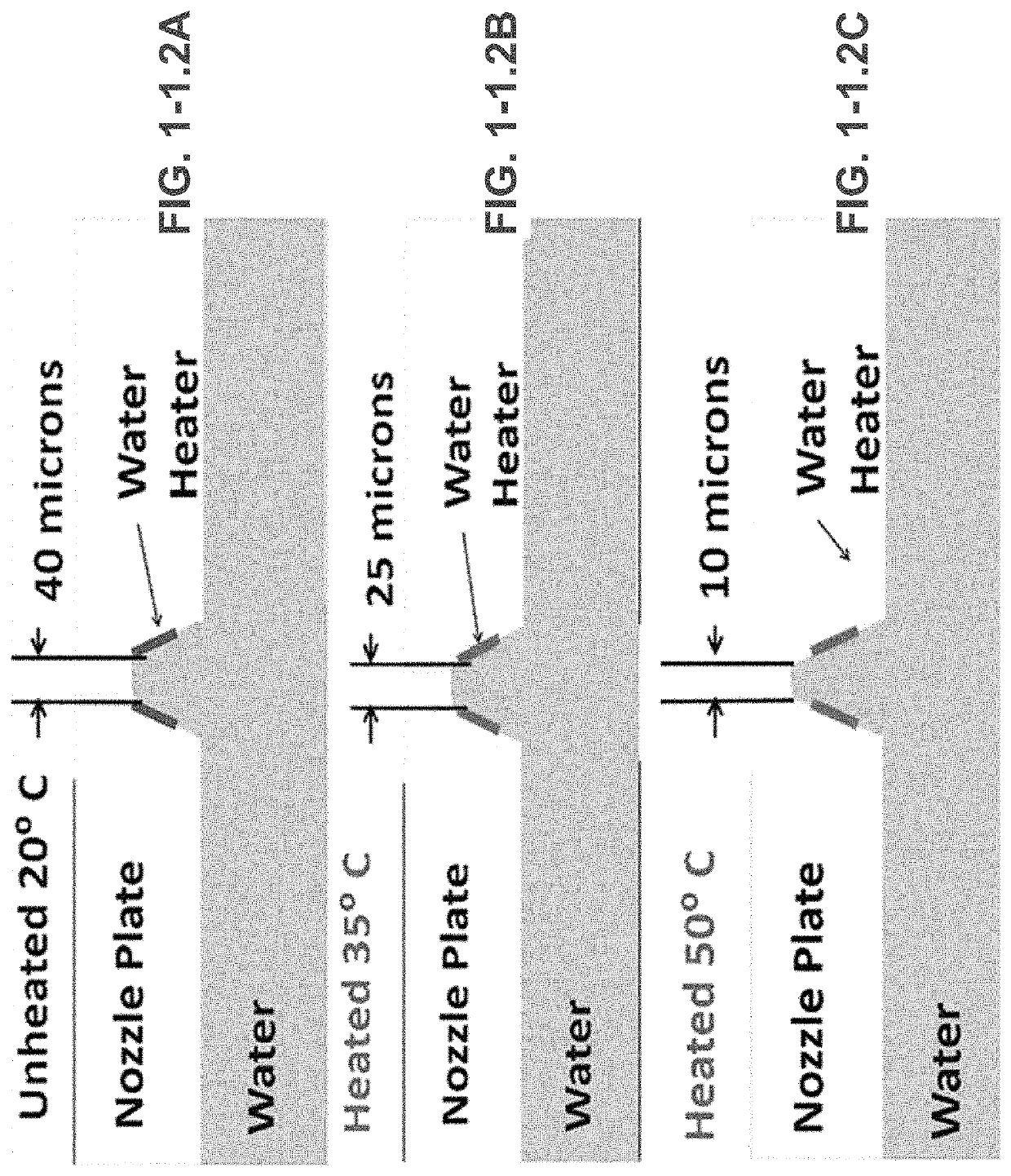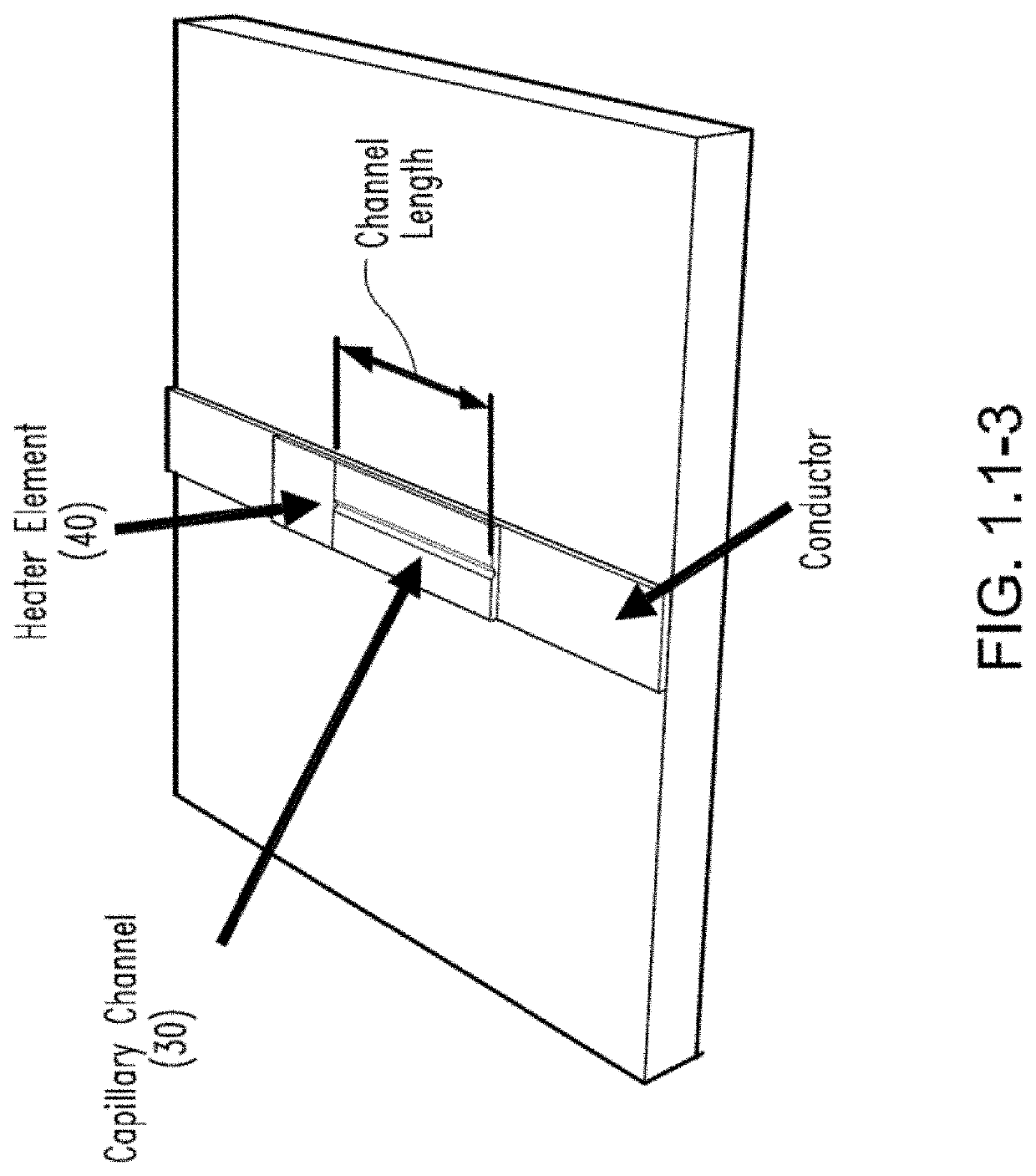Microelectronic thermal valve
a micro-electronic and thermal valve technology, applied in the field of valves, can solve the problems of increased response times and unreliable thrust performance of ar 2 units, and achieve the effects of increasing response times, enhancing thrust to power ratio, and maximizing energy and propulsion efficiency
- Summary
- Abstract
- Description
- Claims
- Application Information
AI Technical Summary
Benefits of technology
Problems solved by technology
Method used
Image
Examples
first embodiment
[0125]FEMTA nozzles included throat aspect ratios (width / depth) at the upper and lower ends of the design spectrum which yielded FEMTA with AR˜2 seen in FIGS. 2.4-1A, B, C, and D, and FEMTA with AR˜8 seen in FIGS. 2.4-2A, B, and C. The different aspect ratios were achieved by varying the etch time in step 3 of the fabrication procedure.
[0126]The nichrome heater elements were produced at a 10 micrometer target width which should give ample margin for error if over etching occurred (see FIGS. 2.4-3A and B). This produced heaters with resistances approximately 25% of the target value but was compensated by using a lower voltage drive signal.
[0127]Two 200 micron thick silicon wafers were split by scratching with a diamond scribe so that 4 halves were processed. The heater thickness was doubled to reduce current density so to eliminate electromigration as a factor and the insulating oxide layer thickness was increased by a factor of 4 to reduce thermal diffusion into the substrate. Enhan...
third embodiment
[0129]The small batch yield and somewhat inconsistent dimensions led to yet another fabrication embodiment. The wafer thickness of the third embodiment devices was chosen to be 500 microns due to availability and ease of handling. Four wafers were selected to represent the four aspect ratios defined previously. The internal nozzle design was consistent with both gen-1 and gen-2 designs with the greatest alteration being the width and depth of the exit chamber. Wet etching of the exit was prohibited by the lifetime of the oxide mask in the etching solution so DRI etching was to be used instead. This meant that only the inlet side lithography and oxide etch was performed in steps i, ii, and iii of the process and the wet etch time in step iv was reduced to 18 minutes since only the 24 micron deep inlet need be etched at this time.
[0130]The heater material was changed from nichrome to vanadium with sputtering time in step v increased to 3 hours with all other settings the same. The van...
second embodiment
[0163]The second embodiment FEMTA nozzles were tested in the 4.2 cubic meter vacuum chamber using the microNewton thrust stand. A test vessel was fashioned from a 1½×1½×1 inch block of Teflon® with power connections and a fixed pressure relief valve.
[0164]The relief valve from Gen2 testing was used to reduce pressure from atmospheric to just above vapor pressure so that water would not be expelled during the pump down process. Teflon was chosen to replace the aluminum model used in thermalvac testing to reduce galvanic corrosion due to metals having a dissimilar galvanic indices in an aqueous environment.
[0165]The use of platinum heaters improved the corrosion problems experienced with chrome and vanadium so that a more comprehensive thrust testing format could be implemented. These heaters also operated at a lower voltage so that applied power could be controlled by a labview program with current augmentation from a unity gain power amplifier.
[0166]The thrust history of a 65 mW tes...
PUM
 Login to View More
Login to View More Abstract
Description
Claims
Application Information
 Login to View More
Login to View More - R&D
- Intellectual Property
- Life Sciences
- Materials
- Tech Scout
- Unparalleled Data Quality
- Higher Quality Content
- 60% Fewer Hallucinations
Browse by: Latest US Patents, China's latest patents, Technical Efficacy Thesaurus, Application Domain, Technology Topic, Popular Technical Reports.
© 2025 PatSnap. All rights reserved.Legal|Privacy policy|Modern Slavery Act Transparency Statement|Sitemap|About US| Contact US: help@patsnap.com



